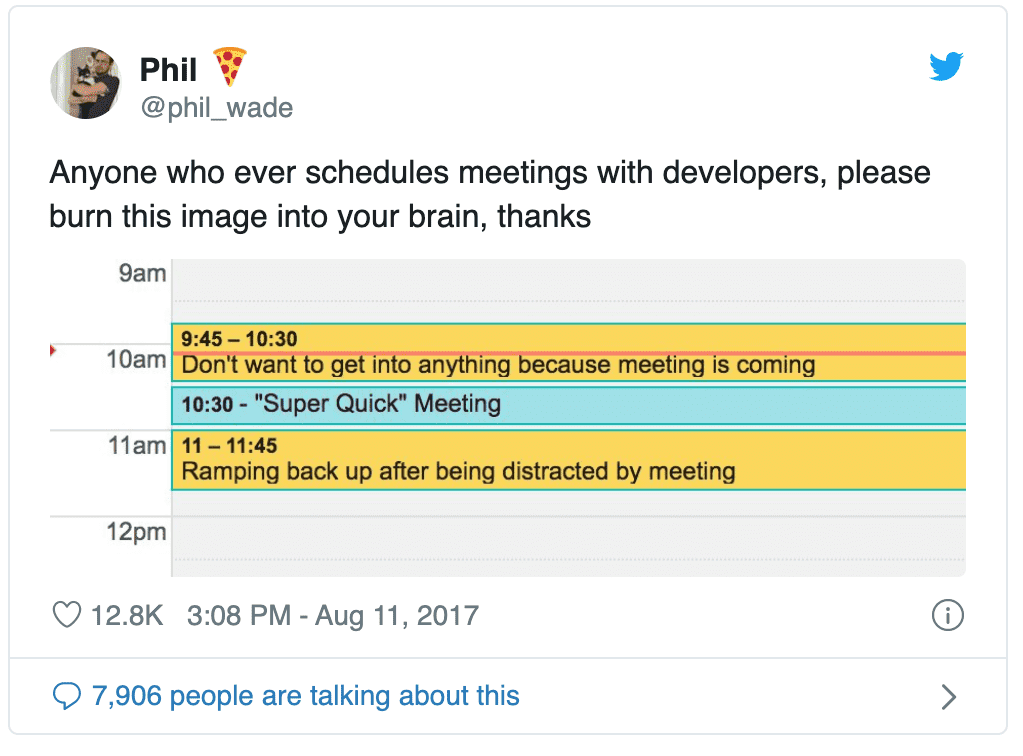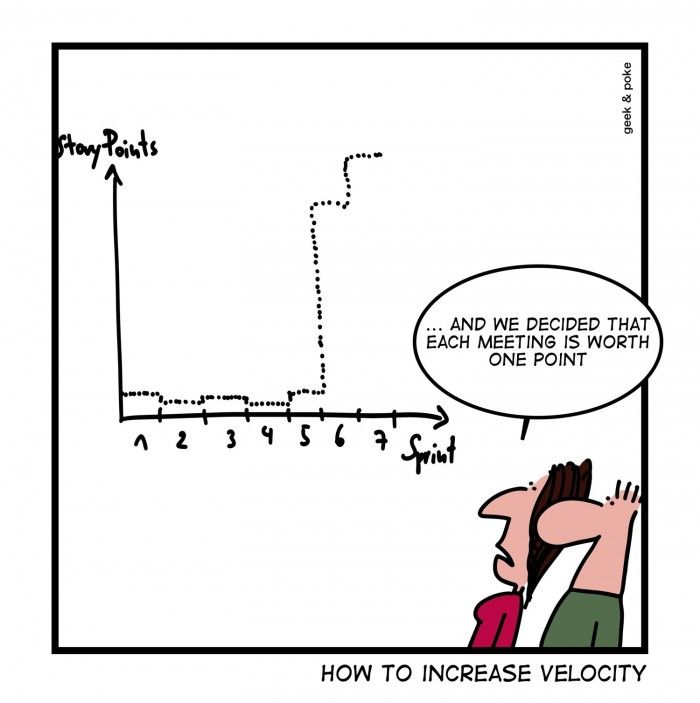Machine Learning + Agile Manifesto = ?
This post was published on April 1st, 2020, and should not be taken too seriously.
Another sprint, another retrospective. You use new formulas, you gather insights, you vote and you have action points. Sometimes you start to regret being just a human. What if you could process incoming requests in parallel? And provide always most accurate responses? You cannot be everywhere. But there is someone who can.
“We have to communicate better” #
Have you heard it in your team? Like a curse, the ‘action point’ stating that “we have to communicate better”. The agile manifesto states “Individuals and interactions over processes and tools”. We try to be aware of psychological needs at work but sometimes we fail to find what we do not want to do. Let’s face it, in IT we do not like communicating. It’s something we constantly avoid. We invented daily standups to squash all interactions into one. Why respond to N people when you can sacrifice two minutes to tell everything the world has to know? At some point, this is not enough. Then we introduce quiet time. We switch off our emails, phones, communicators, we do not allow guests in the room. We are offline for one or two hours. Sometimes we even invert this idea and use “communication hours” outside which you are forbidden to talk to your colleagues. And if we have more than two hours of meetings during the day we make a post-it during the next retrospective.

Tweet by Phil Wade
And because our team leaders know the importance of constant feedback we adjust. We start choosing team delegates to meetings, we introduce a “developer on duty” who takes care of all incoming communication. When it’s my turn I know it won’t be a good week. But at least the rest of the month is better. And then we are surprised that even in our small team information asymmetry starts destroying our decision-making process. When other teams are becoming involved situation gets even worse. Although team tourism helps a little. We start seeking solution. And when we cannot find one what do tech guys do? Transform problems. So we introduce microservices to get a lot of technical problems in exchange for human resources problems. And this works brilliantly.
Taking it one step further #
But aren’t you tired of solving the same issue all the time? We all want to be well informed: product owners, developers, team leaders. Recruiting specialists, retrospectives, spawning demo meetings for the whole department, ad-hoc meetings, soft skills training and we still have communication problems.
All RACI assignment matrices are missing someone, all data is outdated although we resolve problems one after another. And there is a single root cause. We, humans, aren’t well designed for communicating. Because we fail miserably at multitasking. And when it starts consuming too much time we just stop doing it properly.

Image by Geek & Poke
Project “Genesis” #
So what if we wrote a program that just knew everything about Allegro Tech? Well you know we can’t. But we’re living in the 21 century. IBM Watson wins at Jeopardy, DeepMind AlphaGo beats a world master at Go game and Boston Dynamics makes the Atlas robot that can do parkour. Today we introduce Humanoid Allegro Learner (HAL), the best personal company manager, to the world. Let’s take a quick look at the architecture.

There’s a lot happening in this diagram so let’s extract some abstractions. Basically, HAL performs man-in-the-middle to all of our communication tools. It interprets messages, matches them to our database and if it can it cuts the communication by serving the response. Message is transmitted to the end-user only as a fallback when no data is found. Following diagram is equivalent and somehow easier to understand.

There are some mistakes we made during development:
- In the first test on real users, we found they didn’t trust HAL, treating it as dumb machine. We had to hide this information from them not in order not to irritate our precious AI.
- It is very important in Machine Learning to choose a good performance indicator. At first our accuracy in dry run seemed very low, about 60%. After weeks of trying to optimize the algorithm we found that actually HAL’s responses were far more relevant. We found out that human slack messages on #help-me channels were misleading and inaccurate.
- We had to compress our input data. It turned out that after synonym detection, denormalization eliminated 86% of data.
Summary #
First, we introduced our model in the form of a slackbot. HAL reduced communication by nearly 97%, boosting team performance. Zoom virtual assistant is currently in beta testing. We have some problems with it since it interrupts the speaker immediately, without giving him a chance to express full thought. Programmers can work on code and get into flow without interruptions since HAL handles the rest. HAL, I hope I will see you soon in every company.
We are hiring remotely and HAL is not prepared yet for recruitment so you will have to talk with our programmers. But you will work with motivated people that know how to code and avoid unnecessary meetings. Join us here!
* Have you noticed? This article was written by our beloved HAL
